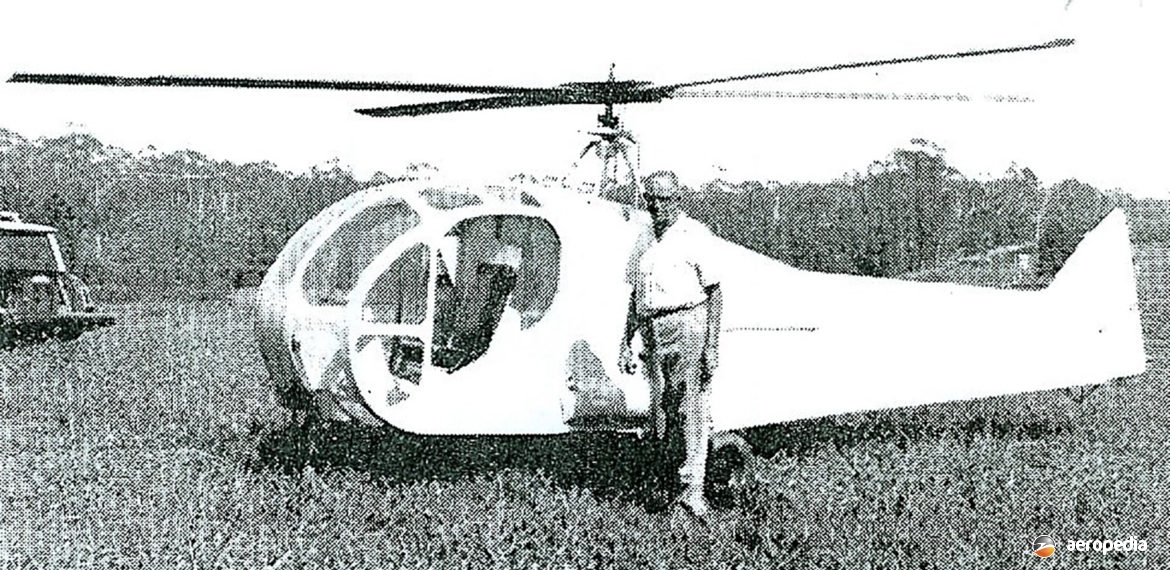Photograph:
The Wikopter on completion with Donald Harkness (G N Wikner)
Country of origin:
Australia
Description:
Two-seat light helicopter
Power Plant:
One 108 kw (145 hp) de Havilland Gipsy Major four-cylinder in-line air-cooled engine
Specifications:
- TBA
History:
The Wikopter was an experimental helicopter designed and built by Geoffrey Neville Wikner (1904 – 1990) at Trafalgar Heights, Nelson Bay, NSW. Wikner was well known, amongst other things, for designing the Wikner series of light aircraft, and for flying a Handley Page Halifax to Australia after World War II.
Work on the Wikopter commenced in June 1960 and by 1964 testing confirmed the designer’s theories about the helicopter. It is believed to have been test flown in about 1970 but was never registered. Wikner stated it was built to FAA and ARB standards but the Australian Department of Civil Aviation would not grant certification.
Fitted with a Gipsy Major engine, the machine was fitted with a four-blade double semi-rigid see-saw main rotor and a tail in lieu of a tail rotor, torque control being obtained through a tunnel fuselage to a normal rudder. This also assisted translational lift. Subsequently it was partially dismantled and converted to be a swamp boat which reached speeds of 93 km/h (59 mph).

